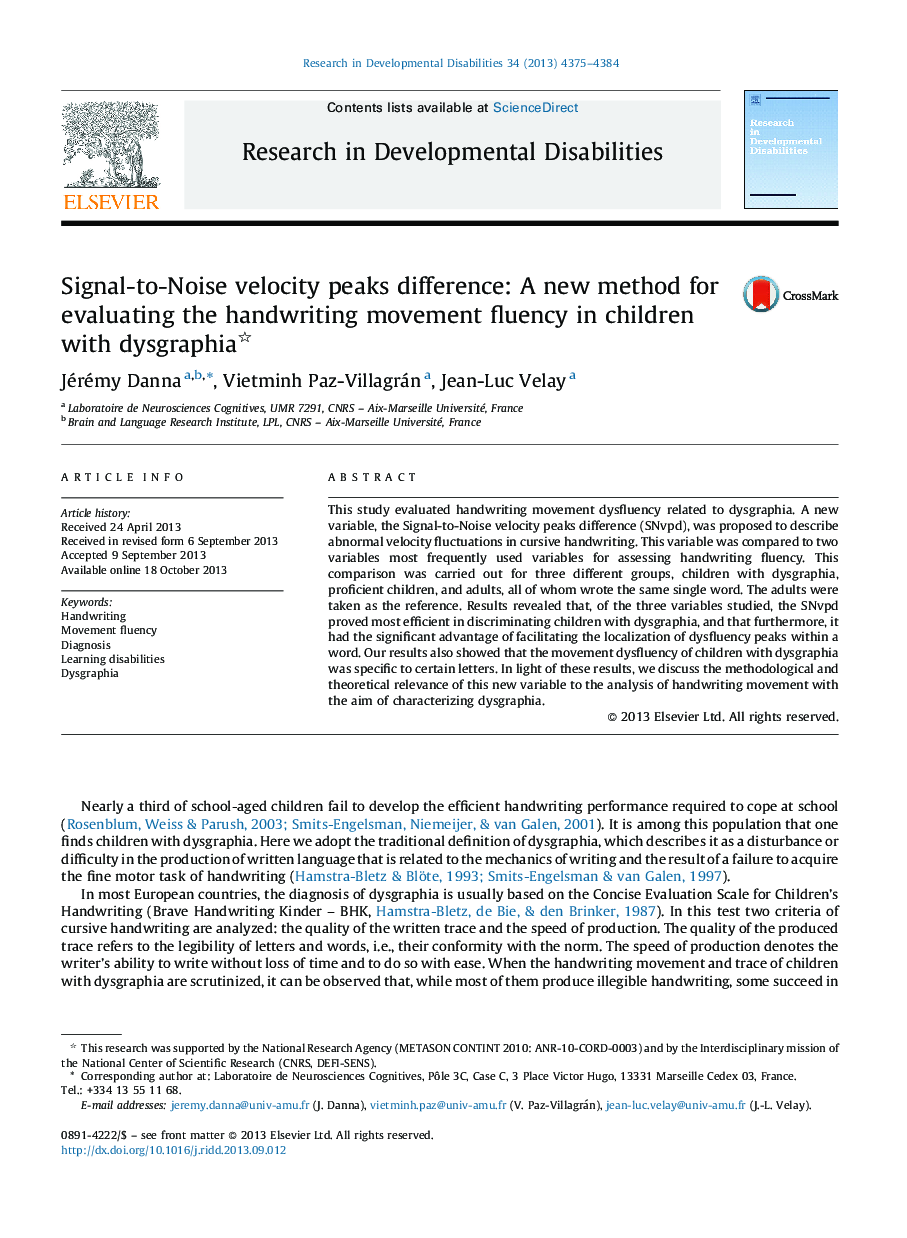| Article ID | Journal | Published Year | Pages | File Type |
|---|---|---|---|---|
| 10317816 | Research in Developmental Disabilities | 2013 | 10 Pages |
Abstract
This study evaluated handwriting movement dysfluency related to dysgraphia. A new variable, the Signal-to-Noise velocity peaks difference (SNvpd), was proposed to describe abnormal velocity fluctuations in cursive handwriting. This variable was compared to two variables most frequently used variables for assessing handwriting fluency. This comparison was carried out for three different groups, children with dysgraphia, proficient children, and adults, all of whom wrote the same single word. The adults were taken as the reference. Results revealed that, of the three variables studied, the SNvpd proved most efficient in discriminating children with dysgraphia, and that furthermore, it had the significant advantage of facilitating the localization of dysfluency peaks within a word. Our results also showed that the movement dysfluency of children with dysgraphia was specific to certain letters. In light of these results, we discuss the methodological and theoretical relevance of this new variable to the analysis of handwriting movement with the aim of characterizing dysgraphia.
Related Topics
Life Sciences
Neuroscience
Behavioral Neuroscience
Authors
Jérémy Danna, Vietminh Paz-Villagrán, Jean-Luc Velay,
